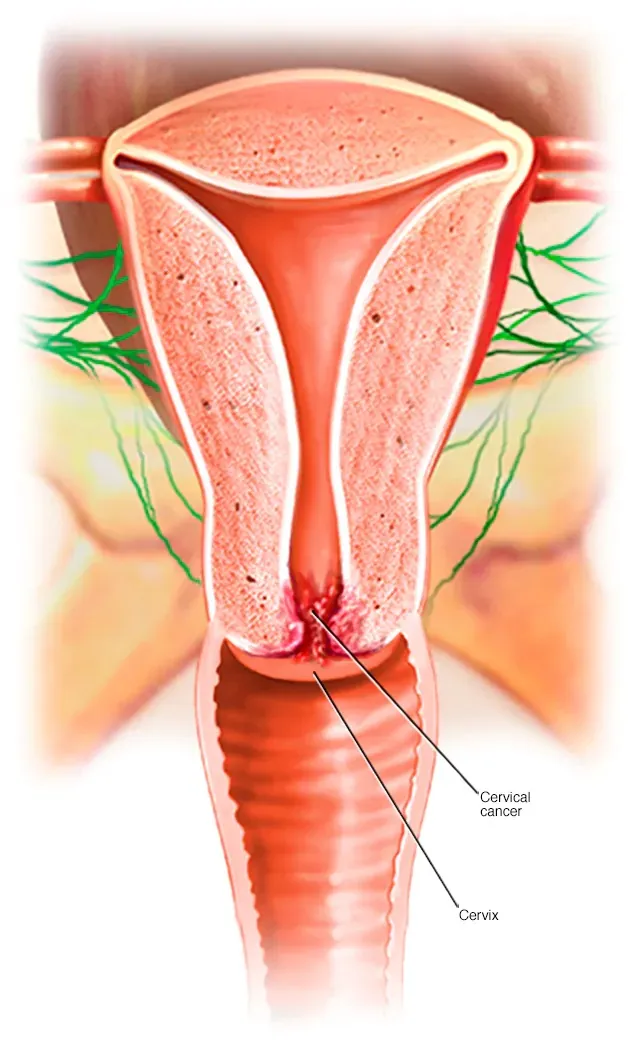Cervical cancer develops in the cells of the cervix — the lower part of the uterus that connects to the vagina. Early detection through regular screening (Pap smear and HPV test) can significantly improve the chances of successful treatment.
India is one of the leading destinations for advanced cervical cancer treatment, offering world-class facilities, expert oncologists, and affordable care for international patients.

Here are the main types of Cervical Cancer, explained simply :
Squamous Cell Carcinoma (SCC) –
This is the most common type, accounting for about 80–90% of cervical cancers. It starts in the thin, flat cells (squamous cells) that line the outer part of the cervix and gradually spreads deeper.
Adenocarcinoma –
This type develops in the glandular cells of the cervix that produce mucus. It is less common but has been increasing in recent years.
Adenosquamous Carcinoma (Mixed Type) –
This rare type shows features of both squamous cell carcinoma and adenocarcinoma.
Small Cell Neuroendocrine Carcinoma –
A very rare and aggressive form of cervical cancer that starts in hormone-producing cells of the cervix.
Here’s the procedure for Cervical Cancer Treatment explained step-by-step :
Pap smear, HPV test, and biopsy are performed to confirm cervical cancer.
Imaging tests like MRI, CT scan, or PET scan help determine the stage (extent) of cancer.
The oncologist decides the best treatment based on the stage, size, and spread of the cancer, as well as the patient’s age and fertility preferences.
Conization: Removes a cone-shaped piece of tissue containing abnormal cells.
Trachelectomy: Removes the cervix but preserves the uterus (for women who want to have children).
Hysterectomy: Removes the uterus and cervix; may include nearby lymph nodes if cancer has spread.
Uses high-energy X-rays to destroy cancer cells.
May be external beam radiation or brachytherapy (internal radiation).
Often combined with chemotherapy for better results.
Uses anti-cancer drugs to kill or slow the growth of cancer cells.
Given intravenously (IV) in cycles.
Commonly combined with radiation in advanced cases.
Targeted therapy attacks specific cancer cell mechanisms.
Immunotherapy boosts the body’s immune system to fight cancer cells (used in advanced or recurrent cases).
Regular follow-up visits, Pap tests, and imaging to monitor for recurrence and ensure recovery.